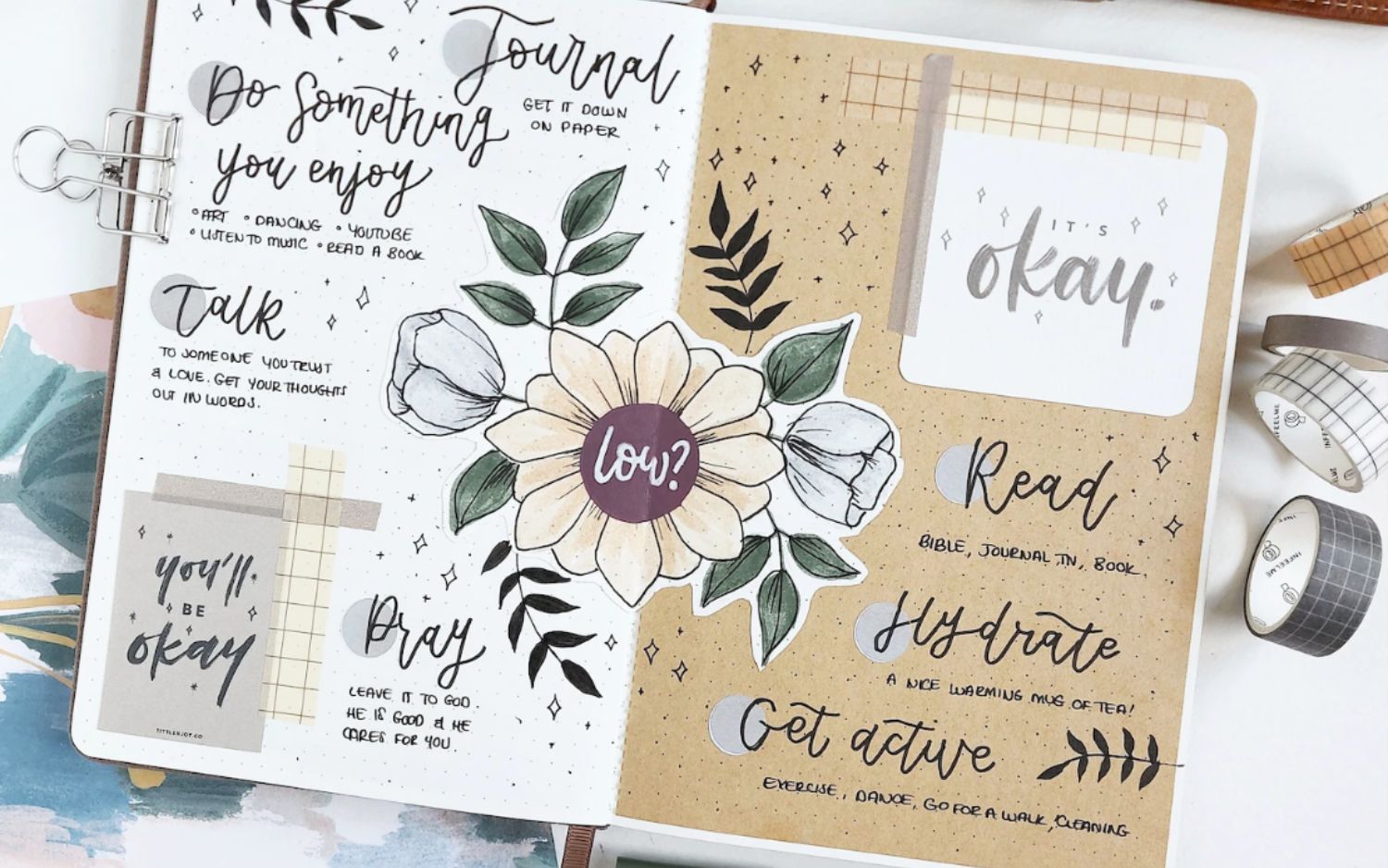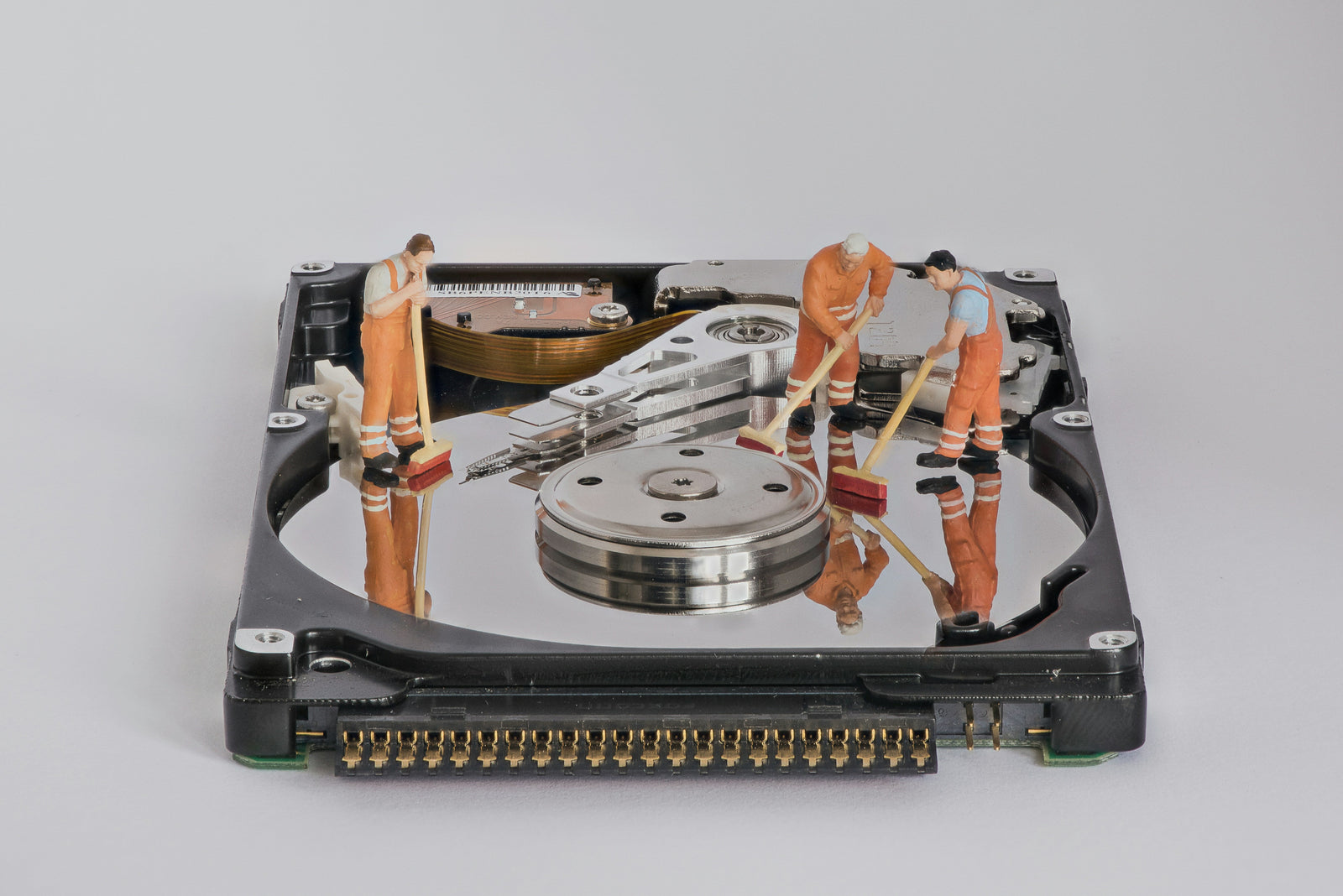Since starting to bullet journal a few years ago, a lot has changed and evolved along the way. For starters, I used to be an advocate for minimalism, only sighting the grey highlighter when I really wanted something to stand out! Now, I can’t seem to create a spread without it looking like a stationery store has thrown up across the page (in a functional, coordinated manner of course!). However, one thing has stayed the same, and it’s the positive effect that bullet journaling has had on my mental health. In the same way my style has changed, I initially started bullet journaling for purely planning purposes, but it has now become an important part of caring for my mental health. Having lived with clinical anxiety for nearly 10 years, I’ve developed good coping mechanisms, and bullet journaling has become a very effective staple in my self-care routine.
I’m going to share five ways you can bullet journal to care for your mental wellbeing, and how I use these methods to help me in my journey with mental health issues.
1. Clear your mind
Getting your thoughts out of your head, and down onto paper is an extremely effective way of relieving stress and anxiety. The act of acknowledging your thoughts and writing them on paper, has a similar effect to talking with someone. It allows you to process thoughts and emotions, as you think about what is really going on up in there! Also, physically seeing it on paper, gives you a chance to come back to your thoughts, and tackle some of the issues when you’re in a better state of mind.
I use my bullet journal for reflective journaling, like keeping a diary. I create weekly spreads, and at the end of the day unpack my thoughts and emotions. I divide a page into roughly three days, to take away the pressure of filling in an entire blank page. You can also use it for ‘to do’ lists, or a ‘brain dump’, a simple space to scribble things down, knowing they’re there to refer to later.
2. Use a mood and habit tracker
A mood tracker is a great way to have a very quick daily check-in with yourself. It gives you the chance to pause, think, and jot down how you’re feeling in yourself. I use a very simple graph method, with the days of the month numbered along the bottom, and my mood from very low to very happy marked with (extremely complex…) smiley faces. The reason why I use a graph method that is so easy, is so when I’m extremely low, it’s simple to pick up a pen and mark, without having to overthink anything. I can also spot trends over certain days, or in a flow of days. The graph also allows space for me to jot down what might have made me feel very low, or very happy. For example, I can jot ‘lack of sleep’ next to a low day, so that in future I know to make sure I prioritise getting my 8 hours of sleep, or note ‘went for coffee with a good friend’ next to a very happy day, so I know to do that more often.
Alongside my mood tracker, I keep a simple habit tracker, and colour in days I complete each habit I’m tracking. I track things like exercise, morning devotion, medication, staying hydrated etc. Picking up good habits that we know will benefit our health and wellbeing, can be hard to do in the midst of a busy life, so tracking my progress keeps me motivated. Again, I can spot patterns of missing similar days, or correlation between low days in my mood tracker, and whether missing any good habits has affected my mental health.
Something I want to warn against, is using these as tools to beat yourself up. Some days, even days at a time, I won’t keep up with my tracker, especially if I’m extremely busy or low. Having those blank spaces is okay – just come back to it when you can.
3. Create spreads to pick yourself up!
These are my favourite kind of spreads to create - the ‘Pick-me-up’ spread. Simply create a spread that has a selection of actions you can take when you’re feeling low or stressed, that you know are effective in improving your mental state. To create these spreads, I use the notes from my mood tracker, to compile ideas of things to do, that I know work to pick me up when I’m feeling anxious or stressed, and I mark them with a page tab or washi tape, so that they’re easy to find. It includes things like; go for a walk, journal, stay hydrated, pray, talk to someone you trust etc. to take it another step further, you can number these ideas in rank of most to less effective. You can also include encouraging quotes and sayings in your weekly spreads as mood boosters.
The great thing about this method, is that you can completely personalise it. What works for me, may not work for you. For example, my faith is huge part of my life that helps me a great deal, so I included bible verses all over my spreads. Maybe your thing is poetry or music, jot down some lyrics or lines from your favourite poem. This spread is also a chance for you to unleash your creativity if you’re that way inclined. Which brings me to my next bujo method…
4. Be mindful
When you think of mindfulness, you might think of sitting on the floor cross-legged meditating, an adult colouring book, or closing your eyes and eating a cookie like you really mean it!
Mindfulness is a proven effective way of relieving stress and anxiety. All it requires is for you to be fully present, aware of where you are and what you’re doing, without allowing your mind to be over active or judgmental. It basically means being fully submerged and concentrated on your surrounding or activity, so that your mind is not going a hundred miles an hour removed from where you are or what you’re doing.
You can be mindful with literally anything, including bullet journaling. Bullet journaling is one task I can do that completely empties my mind of anxiety, because I’m so focused on what I’m doing. If you’re anything like me and love getting arty, take time to illustrate, use washi tape, stickers or paint and get creative with your spreads. If your aesthetic is minimal, you can get creative with the content of your bullet journal; try gratitude spreads, writing lyrics or poems, or learning some calligraphy techniques.
5. Enjoy your journal
I’ve always said to myself, that if the enjoyment of bullet journaling ever diminishes, or it becomes a chore, I need to change something! Bullet Journaling is so enjoyable and sustainable because it is completely customisable, and it can evolve along with you.
Bullet Journal in a way that you will enjoy. If you’re a minimalist, enjoy your grey highlighter and single black pen; If you’re a sticker nerd, get sticker happy; if you love to doodle and paint, incorporate it into your spreads! Whatever you do, enjoy it, because doing something you enjoy is a sure way to improve your mental wellbeing!
Bullet journaling has been an amazing system not only for staying organised, but for helping me look after my mental health and wellbeing. Whether you’re taking care of your general mental health or are living with more prominent mental health issues such as anxiety or depression, there are many methods to using a bullet journal that can contribute to maintaining and improving your wellbeing. It can include incorporating skills learnt in therapy such as mindfulness, or a specific spread for simply getting your thoughts down on paper. Try out some of these methods, learn what might work for you, develop as you go and enjoy it!
Temi Manning, also known as Living Letter Plans, is a stationery and lifestyle influencer from the UK. She creates digital content about journaling, planning, wellbeing, and faith on Instagram and YouTube. Temi began sharing her creative passion on Instagram in 2017. Since then, she has started a small business called Living Letter Designs, selling wall art and gifts, and works with various brands creating lifestyle content. As well as this, Temi works part time in digital marketing for a UK based charity, and also writes features for various faith and stationery blogs.










Alicia
October 06, 2023
I wish I was as good a doodler as you are! Your pages look so fun and yet organized.